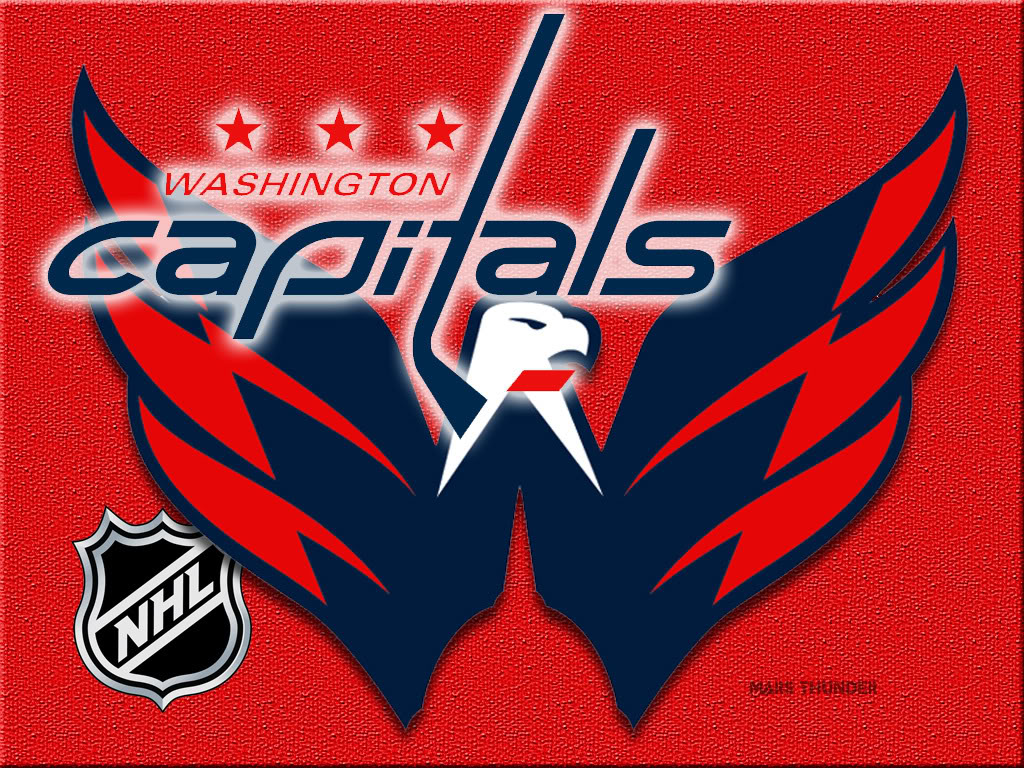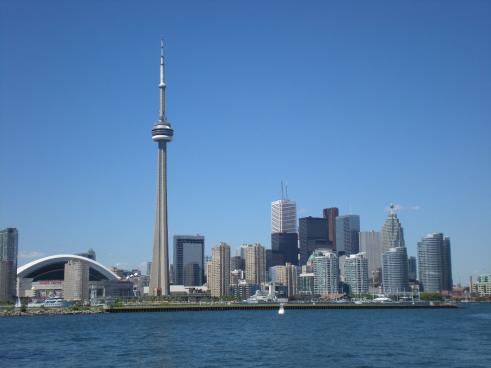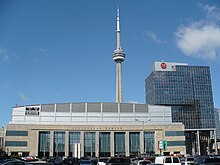Next Saturday night, the New Jersey Devils visit the Washington Capitals. The Caps won the Stanley Cup in 2018, and look capable of doing it again. This will be a hard roadtrip for the team. Hopefully, reading this will make it an easier one for you.
Before You Go. D.C. can get really hot in Summer, but this will be mid-January, so you've got a different issue. Or, you usually would. It turns out, it's going to be unseasonably warm, at least in daylight. For this coming Saturday,
The Washington Post is predicting high 60s for the afternoon, and mid-40s for the evening. In addition, rain is predicted for the entire weekend -- but no snow. A Winter jacket will be needed, and an umbrella, but no boots.
Washington is in the Eastern Time Zone, so you won't have to fiddle with your clocks, digital or otherwise.
Tickets. The Capitals averaged 18,774 fans per game last season, a sellout. As long as Ovechkin is playing for them, they're going to sell well. So getting tickets could be a problem.
This being the Nation's Capital, you can expect ticket prices to be as high as the Washington Monument. Lower bowl (100 sections) seats between the goals will set you back $225. Behind the goals, they're $158. In the next level (200 sections), they're $151 between, but there's no behind-the-goals seats in that level. In the top deck (400 sections), they're $95 between and $80 behind.
Getting There. Getting to Washington is fairly easy. If you have a car, I recommend using it, and getting a hotel either downtown or inside the Capital Beltway, because driving in Washington is roughly (good choice of words there) as bad as driving in New York.
It's 216 miles by road from the Prudential Center in downtown Newark to the Capital One Arena in downtown Washington. If you're not "doing the city," but just going to the game, take the New Jersey Turnpike all the way down to the Delaware Memorial Bridge (a.k.a. the Twin Span), across the Delaware River into the State of, well, Delaware. This should take about 2 hours, not counting a rest stop.
Speaking of which, the temptation to take an alternate route (such as Exit 7A to I-195 to I-295 to the Ben Franklin Bridge) or a side trip (Exit 4, eventually leading to the Ben Franklin Bridge) to get into Pennsylvania and stop off at Pat's Steaks in South Philly can be strong. But if you want to get from New York to Washington with making only 1 rest stop, you're better off using the Delaware House Service Area in Christiana, between Exits 3 and 1 on the Delaware Turnpike. It's almost exactly the halfway point between New York and Washington.
Once you get over the Twin Span – the New Jersey-bound span opened in 1951, the Delaware-bound one was added in 1968 – follow the signs carefully, as you'll be faced with multiple ramp signs for Interstates 95, 295 and 495, as well as for US Routes 13 and 40 and State Route 9. You want I-95 South, and its signs will say "Delaware Turnpike" and "Baltimore." You'll pay tolls at both its eastern and western ends, and unless there's a traffic jam, you should only be in Delaware for a maximum of 15 minutes before hitting the Maryland State Line.
At said State Line, I-95 changes from the Delaware Turnpike to the John F. Kennedy Memorial Highway, and you'll be on it for about an hour (unless you want to make another rest stop, either the Chesapeake House or the Maryland House) and passing through Baltimore, before seeing signs for I-895 and the Baltimore Harbor Tunnel, Exit 62.
From here, you'll pass through the Baltimore Harbor Tunnel. Take I-895 to Exit 4, and you'll be on Maryland Route 295 South, the Baltimore-Washington Parkway. BWP exits are not numbered, but, in this case, that doesn't matter, because you're going to take it all the way to the end, with the exit indicating U.S. Route 50 West, which will also be New York Avenue NE. When you get to 6th Street NW, which is part of U.S. Route 1, turn left. The Capital One Arena is between 6th and 7th Streets, and between F and G Streets. The official address is 601 F Street NW.
If all goes well -- getting out of New York City and into downtown Baltimore okay, reasonable traffic, just the one rest stop, no trouble with your car -- the whole trip should take about 4 hours.
Washington is too close to fly, just as flying from New York to Boston, Philadelphia and Baltimore, once you factor in fooling around with everything you gotta do at each airport, doesn't really save you much time compared to driving, the bus or the train. So forget about flying from JFK, LaGuardia or Newark to Reagan National or Dulles International Airport. (John Foster Dulles was President Dwight D. Eisenhower's Secretary of State.)
The train is a very good option, if you can afford it. Washington's Union Station is at 50 Massachusetts Avenue NE, within sight of the Capitol Building. But Amtrak is expensive. They figure, "You hate to fly, you don't want to deal with airports, and Greyhound sucks, so we can charge whatever we want."
Union Station
Newark to Washington will run you $192 round-trip on a standard Northeast Regional, $346 on an
Acela Express, formerly named the
Metroliner. That's before you add anything like Business Class or, God forbid, Amtrak's overmicrowaved food. Still, it's less than 3 hours if you take the
Acela Express, and 3 hours and 40 minutes if you take a regular
Northeast Regional train.
Word of warning: The Devs-Caps game starts at 7:00, so it will end at around 9:20 or 9:30. The last train of the night back to Newark leaves Union Station at 10:10 PM (arriving at Newark Penn at 1:32 AM), so you'll have a little over half an hour to get from the arena to the station. This is possible by Metro or taxi, but it doesn't leave much margin for error -- especially if the game goes to overtime or, with the Devils' luck, a shootout. If you can afford an overnight stay at a hotel (and D.C. hotels are expensive, a bit cheaper in the nearby suburbs), you should get one, and leave on Sunday instead.
Greyhound has rectified a longtime problem. They now use the parking deck behind Union Station as their Washington terminal, instead of the one they built 6 blocks away (and thus 6 blocks from the nearest Metro station), in the ghetto, back in the late 1960s. So neither safety nor aesthetics will be an issue any longer. Round-trip fare on Greyhound from Port Authority in New York to Union Station in Washington can be as high as $126, but you can get it for as little as $73 on advanced purchase. It takes about 4 1/2 hours, and usually includes a rest stop about halfway, either on the New Jersey Turnpike in South Jersey or on the Delaware Turnpike.
Again, the game will end around 9:30 PM. If you took Amtrak down, the last train of the night leaves Union Station at 10:10 PM. There's a 10:00 PM Greyhound back to Port Authority, but it doesn't get in until 2:20 AM; and an 11:15 that arrives at 4:15 AM. Have you ever been in Port Authority before sunrise? I have, and it's pretty depressing. Better to stay over, if you can afford it.
Once In the City. Founded on July 16, 1790, and usually referred to as "The National City" in its early days, and "Washington City" in the 19th Century, the city was named, of course, for George Washington, although its "Georgetown" neighborhood was named for his predecessor as our commander-in-chief, King George III of England.
The name of its "state," the District of Columbia, comes from Columbia, a historical and poetic name used for America, which was accepted as the nation's female personification until the early 20th Century (as opposed to its male personification, Uncle Sam), when the Statue of Liberty began to take its place in the public consciousness. "Columbia" was derived from the man who "discovered America," Christopher Columbus, and places throughout the Western Hemisphere -- from the capitals of Ohio and South Carolina to the river that separates Washington State from Oregon, from the Ivy League university in Manhattan to the South American nation that produces coffee and cocaine, are named for him, albeit with different spellings.
Downtown Washington, D.C.
Notice the lack of tall buildings.
Like a lot of cities, Washington suffered from "white flight," so that, while the population within the city limits has seriously shrunk, from 800,000 in 1950 to 680,000 today; the metro area went from 2.9 million to double that, 6.1 million. The District was 71 percent white in 1940, but is now 51 percent black, 36 percent white, 9 percent Hispanic and 4 percent Asian. Overall, the metro area, including Maryland and Virginia suburbs, is about 46 percent white, 26 percent black, 17 percent Hispanic and 11 percent Asian.
As a result of this growth, the roads leading into the District, and the one going around it, the Capital Beltway, Interstate 495, are rammed with cars. Finally, someone wised up and said, "Let's build a subway," and in 1976, the Metro opened.
That metropolitan growth was boosted by the Maryland and Virginia suburbs building housing and shopping areas for federal-government workers. And, perhaps more than any other metro area, the poor blacks who once lived in the city have reached the middle class and built their own communities (especially to the east, in Maryland's Prince Georges County, which includes Landover). The metro area now has over 6 million residents -- and that's not including the metro area of nearby Baltimore, which would boost it to nearly 9 million and make it the 4th-largest "market" in the country, behind New York, Los Angeles and Chicago, slightly ahead of the San Francisco Bay Area.
Lots of people from the District and its Maryland and Virginia suburbs went up the Parkway to Baltimore to see the Orioles during the District's 1972-2004 baseball interregnum. However, during the NFL interregnum between Robert Irsay's theft of the Colts in 1984 and the arrival of the Ravens in 1996, Baltimore never accepted the Redskins as their team, despite 2 Super Bowl wins in that period.
Before you get to Union Station, read the
Washington Post and the
Baltimore Sun online -- or, if you want to go old-school, buy paper copies of them at the Station. The
Post is a great paper with a very good sports section, and in just 6 seasons (now into a 7th) has covered the Nats very well, despite the 1972-2004 era when D.C. had no MLB team of its own. As a holdover from that era, it still covers the Orioles well. The
Sun is only an okay paper, but its sports section is nearly as good as the
Post's, and their coverage of their town's hometown baseball team rivals that of any paper in the country -- including the great coverage that
The New York Times and
Daily News give to the Yankees and Mets.
Do not buy
The Washington Times. It was founded by the Rev. Sun Myung Moon in 1982 as a replacement for the bankrupt
Washington Star as the area's conservative equivalent to the "liberal"
Post. (That's a laugh: The
Post has George Will, Michael Gerson and Kathleen Parker as columnists, and also had the late Charles Krauthammer.)
Under editor-in-chief Wesley Pruden, the
Times was viciously right-wing, "reporting" every rumor about Democrats as if they were established, proven fact, and giving Republicans a free pass. Moon's "Unification Church" sold the paper in 2009, and Pruden retired the year before. But it has cut about 40 percent of its employees, and has dropped not only its Sunday edition but also its sports section.
And now, there's another paper, the
Washington Examiner, owned by the same company as the conservative magazine
The Weekly Standard, and it is so far to the right it makes
The Washington Times look like the
Daily Kos. It is a truly loony publication, where Michael Barone of the American Enterprise Institute and Byron York of
National Review are considered moderates.
So avoid the loonies and the Moonies, and stick with the
Post. Even if you don't agree with my politics, you're going down to D.C. for hockey, and the
Post's sports section kicks ass.
The sales tax in the District, once as high as 9 percent, is now just 6 percent. Unfortunately, not being a State, the city government has to do everything that a city government does and every thing that a State government does. Which also means that the Mayor, currently Muriel Bowser, has to do everything that the State's Governor would do. The Potomac Electric Power Company (PEPCO), a subsidiary of Exelon, runs the electricity for D.C. and neighboring Maryland communities.
The John A. Wilson Building, 1350 Pennsylvania Avenue NW,
D.C.'s City Hall, and, effectively, also its State Capitol Building
The centerpoint for street addresses is the Capitol Building. North and South Capitol Streets separate east from west, and East Capitol Street and the National Mall separate north from south. The city is divided into quadrants: Northwest, Northeast, Southeast and Southwest (NW, NE, SE and SW). Because of the Capitol's location is not in the exact
geographic centerpoint of the city, NW has about as much territory as the other 3 quadrants put together.
Remember: On street signs, 1st Street is written out as "FIRST," and I Street is written out as "EYE," in order to avoid confusion. And for the same reason, since I and J were virtually indistinguishable in written script when D.C. was founded in 1800, there is no J Street. Once the letters get to W, there is no X, Y or Z Street. Instead, they go to to 2- and then 3-syllable words beginning with the sequential letters: Adams, Bryant, Clifton, etc.
ZIP Codes for D.C. start with the digits 20, with 202 through 205 serving the federal government, and 201 serving Dulles Airport, even though it's in Virginia. For the Maryland suburbs, it's 206 through 209 and 215. For the Virginia suburbs, it's 220 to 223. The Area Code for D.C. is 202, with 301 serving the Maryland suburbs, overlaid by 240; and 703 serving the Virginia suburbs, overlaid by 571.
D.C. is not exactly close to the Atlantic Coast. There are 3 places where area natives like to go to the beach: Rehoboth Beach, Delaware, 120 miles to the east; Ocean City, Maryland, 146 miles to the southeast; and Virginia Beach, Virginia, 209 miles to the southeast.
Going In. Washington's subway, the Metro, was not in place until 1976, but, thereafter, it was a relatively easy ride to downtown. From Union Station (having taken either the train or the bus in) to the arena, it couldn't be any easier: You'll get on the Red Line, and it's 2 stops to Gallery Place-Chinatown, taking all of 5 minutes between the stops. (How long you'll have to wait on the platform to get on the train is another matter. If the outbound trip were during rush hour, it would cost you $2.15. Since this game is on a Saturday, both the outbound and the inbound trips will be $1.75.
The Capital One Arena is at 601 F Street NW, on the edge of Washington's Downtown and its Chinatown, so it's got marquees in both English and Chinese. It's surrounded by a lot of kitsch, with several chain restaurants and faux-Irish pubs. Some people like that sort of thing. Whether you do is up to you, although this will come into play when I get to "After the Game."
Of course, all this means a lot of traffic, so, as I said, you should get a hotel and leave your car in their parking deck. If you're just going down I-95 for the game and coming back up, parking will run you around $20.
The building was named the MCI Center when it opened, and the Verizon Center from when Verizon bought out its telecommunications competitor in 2006 until earlier this year. At least the name makes sense, since "Capital" is in it. The rink is laid out east-to-west. The Capitals attack toward the east end.
In addition to the Caps, the building is home to the NBA's Washington Wizards (formerly the Baltimore Bullets and the Washington Bullets), most Georgetown University basketball games, and occasionally NCAA Tournament basketball. From 1999 to 2018, it was the home of the WNBA's Washington Mystics. It hosted the NCAA's hockey Final Four, the Frozen Four, in 2009. It is 1 of 11 arenas to be home to both an NBA team and an NHL team.
Food. Food at D.C. sports venues runs from the very good at Nationals Park to the very bad at RFK Stadium. Having been to the Capital One Center for a Devils-Capitals game, I can tell you it's more good than bad.
Hard Times Café has 2 outlets in the arena, featuring chili dogs, nachos and wings, on the concourse behind Sections 112 and 119. "my
Oh!" offers gluten-free food at Section 108. There's Dunkin Donuts (good), Papa John's Pizza (bad), Greene Turtle Sports Bar & Grille, Budweiser Brew House, and Draft Ops Fantasy Lounge.
Other than that, presume the usual sports stadium/arena fare: Hot dogs, burgers, pizza, fries, fries, more fries, ice cream (sometimes in the form of Dippin' Dots or whatever they call 'em down there), and maybe some more fries.
Team History Displays. While the Wizards hang their banners on the north and west sides of the arena, the Caps hang their title banners on the south side. These include those for the 1998 Eastern Conference title; the 2010 President's Trophy (best record in the regular season); a title in the old Patrick Division in 1989; in the Southeast Division in 2000, '01, '08, '09, '10, '11 and '13; and in the Metropolitan Division in 2016, '17, '18 and '19.
Note the logo as it changed over the years.
And now, they have a Stanley Cup banner, which the arena's operators, Monumental Sports & Entertainment (who also own the Caps, the Wizards and the Mystics) have chosen to hang with the Wizards' 1978 Bullets title banner.
They have 4 retired numbers, whose banners are hung on the east side, in numerical order: 5, Rod Langway, defenseman, 1982-93; 7, Yvon Labre, defenseman, 1974-81; 11, Mike Gartner, right wing, 1979-89; and 32, Dale Hunter, center, 1987-99. Yes, they retired the number of one of the great thugs of modern hockey history. (Even if you don't like the Islanders, what Hunter did to Pierre Turgeon after that series-clinching goal in the 1993 Patrick Division Final was inexcusable.)
Removed from circulation, but not officially retired, is the 37 of 1990-2008 goaltender Olaf Kölzig, a.k.a. Olie the Goalie, the big hero of their 1998 Cup Finals run.
There are 8 Caps players who have been elected to the Hockey Hall of Fame. Gartner and Langway are 2 of them. Another should be very familiar to Devils fans: Scott Stevens, defenseman, 1982-90. Oddly, despite his status as one of the best defenders in hockey history, and the Devils having retired the Number 4 for him, the Caps have not retired the Number 3 that Scottso wore in Landover. Nor have they retired the Number 22 of Dino Ciccarelli, right wing, 1989-92 -- although that's understandable, since he was only there for 3 seasons.
They haven't retired the Number 8 of Larry Murphy, defenseman, 1983-89; or the Number 77 of Adam Oates, center, 1997-2002. Phil Housley and Sergei Fedorov were also elected to the Hall of Fame, but Housley was with them for only 2 seasons (1996-98), Fedorov for 1 (2008-09), so they aren't really "Capitals Hall-of-Famers." Presumably, 8 will be retired for Ovechkin when he retires.
(Oates had worn Number 12 in Detroit, St. Louis and Boston, but Peter Bondra was wearing it in Washington, so he switched to 77 in honor of his Boston teammate Ray Bourque, and kept wearing it in Philadelphia, Anaheim and Edmonton.)
In 2014, as part of their 40th Anniversary, the team had a fan balloting for the 40 Greatest Caps Players. They are:
* Goaltenders:
Kölzig, Al Jensen, Don Beaupre and Jim Carey (naturally, nicknamed "The Mask").
* Defensemen: Labre, Langway, Murphy, Stevens, Mark Tinordi, Rick Green, Kevin Hatcher, Al Iafrate, Sylvain Cote, Calle Johansson, Sergei Gonchar, Mike Green and Brendan Witt.
* Left Wings: Ovechkin, Steve Konowalchuk, Kelly Miller and Alexander Semin.
* Centers: Hunter, Oates, Doug Jarvis, Ryan Walter, Denis Maruk, Guy Charron, Mike Ridley, Michal Pavonka, Nicklas Backstrom, Bobby Carpenter (who played on the Devils' 1995 Cup winners), Joe Juneau and Jeff Halpern.
* Right Wings: Gartner, Ciccarelli, Bondra, Bengt-Ake Gustafsson, Dave Christian (who played on the 1980 U.S. Olympic team), Craig Laughlin and Jaromir Jagr.
Gartner was the only player who spent significant time with the Caps to have been named to
The Hockey News' 100 Greatest Players in 1998. He, Stevens, Oates and Ovechkin were named to the NHL's 100th Anniversary 100 Greatest Players in 2017. Bondra and Gustafsson have been elected to the International Ice Hockey Federation (IIHF) Hall of Fame. The Lester Patrick Trophy, for contributions to hockey in America, has been awarded to current owner Dick Patrick (no relation), and former general managers Max McNab and David Poile.
The Caps' biggest rivalries are with the Pennsylvania teams: The Philadelphia Flyers due to proximity, and the Pittsburgh Penguins due less to proximity and more to the frequent postseason matchups, and the inevitable comparisons, since they came into the NHL together after the 2004-05 lockout, of the Caps' Alex Ovechkin and the Pens' diving little twerp Sidney Crosby.
The Caps trail their all-time series with the Flyers, 127-102-19. They've met in the Playoffs 5 times, with the Caps winning 3.
The Caps also trail their all-time series with the Pens, 151-126-16. They've met in the postseason 11 times, including in 2016, '17 and '18, with the winner in each of those, and in 3 previous, going on to win the Stanley Cup. The Caps have only won the last of those. The Caps have won only twice: In the 1994 Eastern Conference Quarterfinals, and last year in the Eastern Conference Semifinals. The Caps had become something of the Chicago Cubs of the NHL, with all their flops, but their 1 Cup now means more to their fans than any of the Pens' 5 means to their fans.
Stuff. The Capital One Arena Team Store is located in the northwest corner of the arena. You can get anything with the team's logo on it. Either of them, or both of them.In 2012, Ted Starkey published
Red Rising: The Washington Capitals Story. The sports department of
The Washington Post published
Worth the Wait: The Washington Capitals' Memorable Journey to the 2018 Stanley Cup.
The NHL has released a commemorative DVD of the Caps' 2018 Stanley Cup win. Previously, they released
Washington Capitals: 10 Greatest Games. It includes the 1987 series-clincher over the Flyers, the 1996 series-clincher over the Penguins, and the 1998 Conference title-clincher over the Buffalo Sabres. After that, though, the games are all from 2005 onward, in the Ovechkin era, but before the recent Cup win.
One criticism I see of this package in customer reviews is a claim that the greatest game in Caps history was actually one they lost, the 1987 Playoff Game 7 against the Islanders, the 4-overtime game known as the Easter Epic.
During the Game. A November 19, 2014 article on The Hockey News' website ranked the NHL teams' fan bases, and listed the Capitals' fans 17th, just below the League average: "Low BFI (Blind Faith Index) score tells us Caps fans pick and choose which years to fill Verizon Center."
You do not need to fear wearing your Devils gear to the Cap One Center. The Caps' rivalries with Philly and Pittsburgh are much nastier than those they have with any of the 3 New York Tri-State Area teams. Despite D.C.'s reputation for crime, downtown is well-lit and well-policed. So if you don't start anything, chances are, you will be safe.
This Devils-Capitals game will not feature a promotion.
Although the Caps accept auditions to sing the National Anthem, their regular singer is Master Sergeant Caleb B. Green III, a solo vocalist with the United States Army Band. He has also sung for the Wizards, the Nationals, the Redskins, the Baltimore Orioles, and minor-league baseball's Potomac Nationals.Killing it: Sergeant Green, with the microphone, on the rink.
Because D.C. fans had to go up to Baltimore to get their big-league baseball fix from 1972 to 2004, there is one annoying trait from Oriole games that they brought back with them -- even at Nats and University of Maryland football games: The "O!" shout during the Anthem, on, "O, say does that Star-Spangled Banner yet wave... ?"
I hate that. What's more, traditionally, Washingtonians hate Baltimore. (Much more so than Baltimoreans hate Washington.) Why would you adopt one of their habits? At least they didn't adopt the Orioles' 7th Inning Stretch song, even though, for people coming into D.C. from Virginia, it would be a bit more appropriate: John Denver's "Thank God I'm a Country Boy." That would have made much more sense than the "O!" shout. Their goal song is "The Wicker Man" by Iron Maiden.
The Capitals sometimes wear their original 1974-95 uniforms with the stars on the front. Their current uniforms are an update of those. You may also see the special jerseys they sold in connection with the 2015 NHL Winter Classic, in which they beat the Chicago Blackhawks on New Year's Day at Nationals Park. Since the Caps only go back 40 years, this is not a "throwback," but a "fauxback," imagining what an old-time Caps jersey might have looked like.
Their mascot is an eagle named Slapshot. (No word on whether he's related to the Nationals' mascot, an eagle named Screech.) They have cheerleaders known as the Red Rockers, dressed in, you guessed it, black and old gold. (Kidding: They wear red.) And, as we do, they do Mites On Ice, youth hockey between periods.
Slapshot, the Caps' mascot since 1995.
After the Game. As I said, you should be safe walking around the arena and downtown D.C. If you're looking for a postgame meal (or even just a pint), the nearby choices are many. A particular favorite of mine is Fado, an Irish-themed bar that shows international soccer games. It's a short walk away, at 808 7th Street NW.
The bar 51st State, at 2512 L Street NW, was a known hangout for Yankees, Mets, Giants, Jets, Knicks and Rangers fans (no mention of the Nets, Islanders or Devils, though), but it closed in early 2017. A bar named Rebellion is said to be a Mets fan bar. 1836 18th Street NW. Metro: Red to Dupont Circle. Nanny O'Brien's is said to be a football Giants fan bar. 3319 Connecticut Ave NW. Metro: Red to Cleveland Park.
If you visit D.C. during the European soccer season, which we are currently in the 2 best "football pubs" in town are Lucky Bar, at 1221 Connecticut Ave. NW (Red Line to Farragut North); and Fado Irish Pub, 808 7th Street NW., in Chinatown, a block from the Cap One Center (Red, Yellow or Green Line to Gallery Place).
Sidelights. On November 30, 2018,
Thrillist published a list of "
America's 25 Most Fun Cities," and Washington came in 7th. Washington's sports history is long, but not good. But it is turning around: The Capitals took 44 seasons but have now won a Stanley Cup; the Nationals just won the city's 1st Pennant in 86 years and its 1st World Series in 95 years; and the Mystics won their 1st WNBA title in 22 years of trying. Still on the outside looking in, though: The Redskins, the last of whose 5 NFL titles was 28 years ago; and the Wizards, who haven't sniffed the NBA Finals since the Carter Administration.
But, if you have the time, there are sites are worth checking out:
* Site of Boundary Park and Griffith Stadium. There were 2 ballparks on this site, one built in 1892 and one in 1911, after the predecessor burned down – almost exactly the same story as New York's Polo Grounds. The 2nd one, originally called League Park and National Park (no S on the end) before former pitching star Clark Griffith bought the team, was home to the old Senators from 1911 to 1960, and the new Senators only in 1961.
The Redskins played there from 1937 to 1960, and won the NFL Championship there in 1937 and 1942, although only the '42 title game was played there. There was another NFL title game played there, in 1940, but the Redskins were beaten by the Chicago Bears – 73-0. (Nope, that's not a typo: Seventy-three to nothing. Most points by one team in one game in NFL history, slightly ahead of the 'Skins' 72-41 victory over the Giants at RFK in 1966.)
A pro football team called the Washington Senators played there from 1921 until 1941 (when the manpower shortage of World War II forced them out of business), but only in that 1st season, 1921, did they play in the NFL. The University of Maryland played its home football games at Griffith in 1948 and 1949, while their old Byrd Stadium was demolished and rebuilt (the "new" one since renamed Maryland Stadium). Georgetown University and George Washington University played home games there from 1925 to 1950.
It hosted a fight for the Heavyweight Championship of the World on May 23, 1941: Joe Louis defended the title by knocking Jacob "Buddy" Baer (brother of former Champion Max) out in the 1st round.
While the Senators did win 3 Pennants (1924, '25 and '33) and the 1924 World Series while playing at Griffith, it was not a good home for them. The fences were too far back for almost anyone to homer there, and they hardly ever had the pitching, either (except for Walter Johnson). In 1953, Mickey Mantle hit a home run there that was measured at 565 feet – though it probably shouldn't count as such, because witnesses said it glanced off the football scoreboard at the back of the left-field bleachers, which would still give the shot an impressive distance of about 460 feet.
The Negro Leagues' Homestead Grays also played a lot of home games at Griffith, although they divided their "home games" between Washington and Pittsburgh. Think of the Grays as the original Harlem Globetrotters, who called themselves "Harlem" to identify themselves as a black team even though their original home base was Chicago (and later moved their offices to Los Angeles, and are now based in Phoenix). It's also worth noting that the University of Maryland played its home football games at Griffith in 1948 and 1949.
By the time Clark Griffith died in 1955, passing the team to his son Calvin, the area around Griffith Stadium had become nearly all-black. While Clark, despite having grown up in segregated Missouri during the 19th Century, followed Branch Rickey's path and integrated his team sooner than most (in particular going for Cubans, white and black alike), Calvin was a bigot who wanted to move the team to mostly-white Minnesota. When the new stadium was built, it was too late to save the original team, and the "New Senators" were born.
Griffith Stadium was demolished in 1965, and Howard University Hospital is there now. 2041 Georgia Avenue NW at V Street. Green Line to Shaw-Howard University Station, 3 blocks up 7th Street, which becomes Georgia Avenue when you cross Florida Avenue.
Howard's baseball field, named for D.C. native Maury Wills, is at 7th Street and Barry Place. Its 10,000-seat William H. Green Stadium is further up, at 6th and Girard Streets. Howard has won the National Championship of black college football 7 times: 1920, 1923, 1925, 1926, 1987, 1993 and 1996.
* Robert F. Kennedy Memorial Stadium. Originally named District of Columbia Stadium (or "D.C. Stadium"), the Redskins played there from 1961 to 1996. The new Senators opened there in 1962, and President John F. Kennedy threw out the first ball at the stadium that would be renamed for his brother and Attorney General in 1969. (There was a JFK Stadium in Philadelphia, formerly Municipal Stadium, where the new arena, the Wells Fargo Center, now stands.)
The new Senators played at RFK Stadium until 1971, and at the last game, against the Yankees, the Senators were up 7-5 with one out to go, when angry fans stormed the field, and the game was forfeited to the Yankees. The 'Skins moved to their new suburban stadium in 1997, after closing the '96 campaign without the Playoffs, but the final regular-season game was a thrashing of the hated Cowboys, with over 100 Redskin greats in attendance.
The Nats played the 2005, '06 and '07 seasons at RFK. D.C. United, once the most successful franchise in Major League Soccer, played there from the 1996 founding of MLS until 2017, winning the league title, the MLS Cup, 4 times, including 3 of the 1st 4. In 1998, they became the 1st U.S.-based team to win the tournament now known as the CONCACAF Champions League.
The MLS Cup Final was played there in 1997 (DCU over the Colorado Rapids), 2000 (the team now known as Sporting Kansas City over the Chicago Fire) and 2007 (the Houston Dynamo over the New England Revolution). Previously, in the North American Soccer League, RFK was home to the Washington Whips, and the Washington Diplomats, featuring Dutch legend Johan Cruyff. And the Beatles played there on their final tour, on August 15, 1966.
DC/RFK Stadium was the 1st U.S. stadium specifically designed to host both baseball and football, and anything else willing to pay the rent. But I forgive it. It was a great football stadium, and it's not a bad soccer stadium, but for baseball, let's just say Nationals Park is a huge improvement. And what is with that whacked-out roof?
No stadium has hosted more games of the U.S. national soccer team than RFK: 26. (Next-closest is the Los Angeles Coliseum, with 20.) Their record there is 16 wins, 7 draws and 3 losses. So RFK is thus the closest America comes to having a "national stadium" like Wembley or the Azteca. The last match there was on October 11, 2016, a 1-1 draw in a friendly with New Zealand.
On June 2, 2013, I was in attendance at RFK Stadium for the 100th Anniversary match for the U.S. Soccer Federation. It was a 4-3 win over Germany, but this was not indicative of their true strength: They were operating at half-power because their players from Bayern Munich and Borussia Dortmund had so recently played the UEFA Champions League Final. Only 4 players who played in this game went on to play and win for
Die Mannschaft in the 2014 World Cup Final: Centreback Per Mertesacker (of Arsenal), left back Benedikt Howedes, and forwards Miroslav Klose and Andre Schurrle (you can't be serious).
RFK hosted 5 games in the 1994 World Cup, 9 games of the 1996 Olympic soccer tournament (6 men's and 3 women's, with the main portion of the games being played in Atlanta), and 6 games of the 2003 Women's World Cup.
RFK Stadium also hosted 1 Championship of the old North American Soccer League, Soccer Bowl '80. The New York Cosmos beat the Fort Lauderdale Strikers 3-0. One fight for the Heavyweight Championship of the World was held there: Riddick Bowe defended it, and knocked Jesse Ferguson out there in the 2nd round on May 22, 1993.
With the Nats, 'Skins and United gone, it has been announced that RFK Stadium will be demolished, probably in 2021. It already would have been if the 1973 events of the film
X-Men: Days of Future Past had actually happened, with Magneto (played by Michael Fassbender) using his power to rip RFK Stadium off its foundation and move it 3 1/2 miles away, surrounding the White House.
2400 East Capitol Street SE. Orange Line or Blue Line to Stadium-Armory. The D.C. Armory, headquarters of the District of Columbia National Guard, is that big brown arena-like thing across the parking lot.
* Nationals Park. The Nats' new 41,339-seat home opened in 2008, at 1500 South Capitol Street at N Street. It's not flashy, but it looks nice.
* Audi Field. D.C. United moved into this stadium midway through the 2018 season. On October 11, 2019, it hosted its 1st U.S. national team game, a 7-0 win over Cuba in the CONCACAF Nations Cu. 32 R Street SW, at First Street, separated from Nationals Park by 2 blocks of Potomac Avenue.
Prince Georges County had a proposal for a new stadium near FedExField, and Baltimore offered to build one, leading fans of DCU's arch-rivals, the New York Red Bulls, to mock the club as "Baltimore United." But the Buzzard Point stadium, now named Audi Field, is what was ultimately built.
* FedEx Field. At RFK, the Redskins had the smallest stadium but best home-field advantage in the NFL: Only 56,000 could fit inside, but the upper deck was fairly close, and the north stand, built on aluminum so it could retract for baseball, made for big noise when thousands of fans jumped up and down on it.
At their 1997-present home, originally named Jack Kent Cooke Stadium for the 'Skins' late owner, they have what was once the largest stadium in the NFL (the capacity has been reduced to 82,000 from a peak of 91,000), but maybe the worst home-field advantage. The stadium is too big, and the sound doesn't carry well. The move from a bad neighborhood in the District to out in the Maryland suburbs -- it's right across the Beltway from where the Capital Centre was -- means that no one is intimidated, the way they were at RFK. The Redskins made the Playoffs in 13 of their last 26 seasons at RFK; they've only made it in 4 of their 1st 18 at FedEx.
The Army-Navy Game was played at FedExField in 2011. So far, the U.S. soccer team has played just 1 match at the stadium, a draw with Brazil on May 30, 2012. There were 4 matches played there in the 1999 Women's World Cup. European soccer clubs Real Madrid, Barcelona, Internazionale Milano, Manchester United and Chelsea have plays summer tour games there. It has been selected by the U.S. Soccer Federation as a finalist to be one of the host venues for the 2026 World Cup. It's hosted concerts by Paul McCartney, the Rolling Stones, Bruce Springsteen, U2 and Metallica.
Already, there is talk that it might be replaced. Hopefully, the new stadium will be either in the District, or at least closer to public transportation. 1600 FedEx Way, Landover, Maryland. Blue Line to Morgan Blvd... and then a 20-minute walk north. Yeah, not the best option for someone without a car.
* Uline Arena/Washington Coliseum. This building, opened in 1941, was home to the District's 1st NBA team, the Washington Capitols, from 1946 to 1951. (Note the different spelling.) They reached the 1949 NBA Finals, losing to the Minneapolis Lakers of George Mikan, and were the 1st pro team coached by Red Auerbach. Firing him was perhaps the dumbest coaching change in NBA history: By the time Red coached the Boston Celtics to their 1st NBA title in 1957, the Capitols had been out of business for 6 years.
The Capitols owner who fired Auerbach was the owner Mike Uline, who'd originally named it the Uline Arena. His nickname was Uncle Mike. As far as I know, that and a love of sports is the only thing we have in common.
The Coliseum was last used for sports in 1970 by the Washington Caps (not "Capitols," not "Capitals," just "Caps") of the ABA. It was the site of the first Beatles concert in the U.S. (aside from their appearance on
The Ed Sullivan Show 2 nights before), on February 11, 1964.
It still stands, and its interior and grounds are used as a parking lot, particularly for people using nearby Union Station. Unfortunately, it's in a rotten neighborhood, and I wouldn't recommend visiting at night. In fact, unless you're a student of NBA history or a Beatlemaniac, I'd say don't go at all. 1140 3rd Street NE, at M Street. Red Line to Union Station, and then it’s a bit of a walk.
* Capital Centre site. From 1973 to 1997, this arena with a saddle-shaped roof was the home of the NBA's Washington Bullets, who became the Wizards when they moved downtown. From 1974 to 1997, it was home to the Caps. The Bullets played in the 1975, '78 and '79 NBA Finals there, although they've only won in 1978 and clinched that at the Seattle Kingdome.
The Cap Centre was also the home for Georgetown University basketball, in its glory years of Coach John Thompson (father of the current coach, John Thompson III), Patrick Ewing, Alonzo Mourning, Dikembe Mutombo and Allen Iverson. Remember those 1980s battles with the St. John's teams of Louie Carnesecca, Chris Mullin and Walter Berry?
Muhammad Ali defended the Heavyweight Championship of the World there twice, both times winning by decision: Over Jimmy Young on May 30, 1976; and over Alfredo Evangelista on May 16, 1977.
Elvis Presley sang there on June 27, 1976 and on May 22 and 29, 1977. (He never gave a concert in the District.) It was demolished in 2002, and a shopping mall, The Boulevard at the Capital Centre, was built on the site. 1 Harry S Truman Drive, Landover, Prince George's County, Maryland, just outside the Capital Beltway. Blue Line to Largo Town Center station.
* St. Elizabeths East Entertainment and Sports Arena. Opening in 2018, this 4,200-seat arena is on the campus of St. Elizabeths Hospital -- a psychiatric facility that was once home to would-be Presidential assassins Richard Lawrence (who tried and failed to kill Andrew Jacksonin 1835), Charles Guiteau (who killed James Garfield in 1881) and John Hinckley (who tried and failed to kill Ronald Reagan in 1981).
The arena is a less controversial place. It began hosting the WNBA's Washington Mystics in 2019, and they won their 1st Championship in their 1st season there. 1100 Oak Drive SE. Green Line to Congress Heights.
* Maryland SoccerPlex. The Washington Spirit of the National Women's Soccer League play here, at the main field, with a stadium with 4,000 seats. 18031 Central Park Circle, in Boyds, Montgomery County, Maryland, about 30 miles northwest of downtown D.C. You'd need the DC Metro and 2 buses to get there without a car.
* Site of Brookland Stadium. Seating 30,000, this was the football field of The Catholic University of America (CUA) from 1924 to 1983. It hosted the 2nd leg of the 1970 North American Soccer League Final. (No one had the guts to call it the Soccer Bowl until 1975.) The Washington Darts beat the Rochester Lancers 3-1, but lost 4-3 on aggregate.
Its replacement, Cardinal Stadium, opened soon after Brookland's final event, CUA's "Holy War" victory over Georgetown. Brookland was demolished in 1985, and the Columbus School of Law was built on the site. 3600 John McCormack Drive NE, off Michigan Avenue.
* The Smithsonian Institution. Includes the National Museum of American History, which contains several sports-themed items. 1400 Constitution Avenue NW. Blue or Orange Line to Federal Triangle. (You could, of course, take the same lines to Smithsonian Station, but Fed Triangle is actually a shorter walk.)
If you're into looking up "real" TV locations, the Jeffersonian Institute on
Bones is almost certainly based on the Smithsonian. The real NCIS headquarters used to be a short walk from Nationals Park, on Sicard Street between Patterson and Paulding Streets. Whether civilians will be allowed on the Navy Yard grounds, I don't know; I've never tried it. I don't want to get stopped by a guard. I also don't want to get "Gibbs-slapped" -- and neither do you. However, while the Navy Yard is still home to the DC field office, they have since moved the main NCIS HQ to the Marine base at Quantico, Virginia, and that's a bit of a trek.
Of course,
The West Wing was based at the White House, at 1600 Pennsylvania Avenue NW. Metro: Red Line to Metro Center. (The only character to be a D.C. native was Charlie Young, played by
Dulé Hill -- in real life, a native of Sayreville, New Jersey.) Every President starting with John Adams in 1800 has lived there during his time in office.
Inaugurations were held there in 1945 for Franklin Roosevelt, as he didn't think a big ceremony at the Capitol was proper during World War II; again in 1945 for Harry Truman, after FDR's death; and in 1974 for Gerald Ford after Richard Nixon resigned.
Across from the west side of the White House, at 1651 Pennsylvania, is Blair House, also known as the President's Guest House. Presidents-elect and their families stay there the night before the Inauguration. The Truman stayed there from 1948 to 1951 as the White House was being renovated. On November 1, 1950, an attempt to assassinate Truman was made outside Blair House, but failed.
The best-known D.C.-based show that didn't directly deal with government officials was
Murphy Brown. The
FYI studio was said to be across the street from Phil's, whose address was given as 1195 15th St. NW. Neither the bar nor the address actually exist, but if the address did, it would be at 15th & M Streets. This would put it right down the block from 1150 15th, the headquarters of
The Washington Post. Metro for both: Red Line to Metro Center. The
Post has since moved to 1301 K Street NW.
The University of Maryland, inside the Beltway at College Park, can be accessed by the Green Line to College Park and then a shuttle bus. (I tried that for the 2009 Rutgers-Maryland game, and it works very well.) Maryland Stadium (formerly Byrd Stadium), built in 1950, is one of the nation's best college football stadiums, but I wouldn't recommend sitting in the upper deck if you're afraid of heights: I think it's higher than Shea's was.
Across from the stadium is Cole Field House, where UMd played its basketball games from 1955 to 2002. The 1966 and 1970 NCAA Championship basketball games were played there, the 1966 one being significant because Texas Western (now Texas-El Paso) played an all-black starting five against Kentucky's all-white starters (including future Laker, Knick and Heat coach Pat Riley and Denver Nuggets star Dan Issel). The 1970 Final was won by UCLA over Jacksonville University.
Elvis sang there on September 27 and 28, 1974. The Terrapins won the National Championship in their final season at Cole, and moved to the adjacent Xfinity Center thereafter.
Remember that Final Four run by George Mason University? They're across the Potomac River, at the EagleBank Arena, formerly the Patriot Center. 4500 Patriot Circle, in Fairfax, Virginia. Orange Line to Virginia Square-GMU.
The U.S. Naval Academy is in Annapolis, Maryland, 33 miles east. The University of Virginia, in Charlottesville, 120 miles southwest. Virginia Tech (Virginia Polytechnic Institute), in Blacksburg, 263 miles southwest. In spite of that distance, both the Cavaliers and the Hokies have a strong presence in the D.C. area.
I also recommend visiting the capital's museums, including the Smithsonian complex, whose most popular buildings are the National Archives, hosting the originals of the Declaration of Independence and the Constitution; and the National Air and Space Museum, which includes the Wright Brothers'
Flyer, Charles Lindbergh's
Spirit of St. Louis, Chuck Yeager's
Glamorous Glennis (the 1st plane to break the sound barrier), and several space capsules including
Apollo 11. The Smithsonian also has an annex at Dulles International Airport out in Virginia, including a Concorde, the space shuttle
Discovery, and the
Enola Gay, the plane that dropped the 1st atomic bomb.
Being the Nation's Capital, D.C. has lots of Presidential-themed locations, aside from the White House. Mount Vernon, which now has a George Washington Presidential Library and Museum on the grounds, at 3200 Mount Vernon Highway in Alexandria, Virginia. Red Line to Metro Center, then, at 15th Street & New York Avenue NW, you can catch Bus 11Y, which will go right there.
After the White House was burned by the British Army on August 24, 1814, during the War of 1812, President James Madison and his wife Dolley moved into a house now known as the Octagon Museum, and stayed there for the rest of their term, with successors James and Elizabeth Monroe moving back into the White House in 1817. 1799 New York Avenue NW, 2 blocks west of the White House. Blue or Orange Line to Farragut West.
At the same time, Monroe was both Secretary of State and Secretary of War (the post we now call Secretary of Defense), and lived at 2017 I Street (Eye). Blue or Orange Line to Foggy Bottom-GWU. When he became President, his Secretary of State was John Quincy Adams, and, before he became the next President he lived a block away at 2133 I Street.
As Andrew Jackson's Secretary of State and then Vice President, future President Martin Van Buren lived at what's now 748 Jackson Place, 2 blocks north of the White House. As a federal official in the 1890s, Theodore Roosevelt lived down the block, at 736 Jackson Place.
Brown's Indian Queen Hotel was where John Tyler in 1841 and Millard Fillmore in 1850 were living when they became President when their predecessors died, and each was sworn in there. The offices of the National Association of Retail Collection Attorneys, and the Capital Grille restaurant, are on the site now. 601 Pennsylvania Avenue NW. Three blocks down, at 300 Pennsylvania, the National Gallery of Art Library was built on the site of the house where James K. Polk lived when he was Speaker of the House. Metro: Green or Yellow Line to Archives-Navy Memorial.
The Library of Congress – the current building, a.k.a. the Jefferson Building – is not only one of America's holiest sites in its own right, but it was built on the site of the house where Abraham Lincoln stayed during his 1 term in Congress (1847-48). 101 Independence Avenue South.
Lincoln was assassinated at Ford's Theatre on April 14, 1865, and was carried across the street to a boarding house, the Petersen House, where he died the next morning. 511 and 516 10th Street NW, respectively. Much like Dealey Plaza in Dallas, where John F. Kennedy was assassinated 98 years later, the block has largely been preserved, although not everything on the outside is like it was in 1865. Metro: Blue, Orange or Red to Metro Center; or Blue, Green, Yellow or Red to Gallery Place-Chinatown, as they're right in between the stations.
At the time, Andrew Johnson, the new President, was staying, and was sworn in, at Kirkwood House, at 1111 Pennsylvania Avenue NW. An office building and a Fogo de Chão Brazilian Steakhouse are on the site now. They're across from the Old Post Office Pavilion, now one of Donald Trump's money-laundering hotels. Metro: Blue or Orange to Federal Triangle.
Three blocks up, at 1401 Pennsylvania, is the Willard Hotel. The current version of this legend went up in 1901, replacing the 1847 version that was where Ulysses S. Grant stayed as General-in-Chief – making it, in effect, the Civil War's Pentagon. Metro: Red, Blue or Orange to Metro Center.
Between the end of the war in 1865, and taking office as President in 1869, Grant lived at what's now called the Scott-Grant House, at 3238 R Street NW, in the Georgetown section of town. You'll have to take Metrobus DCWE to get there, and to any Georgetown location. This includes the various homes of John F. Kennedy between his 1946 election to Congress and his 1960 election as President: 1528 31st Street, 1400 34th Street, 3260 N Street, 3271 P Street, 3321 Dent Place, 2808 P Street and 3307 N Street.
President James Garfield was shot on July 2, 1881, and hung on until September 19. The shooting happened at the Baltimore and Potomac Railroad Station, at 6th Street and B Street (now Constitution Avenue) NW. The Smithsonian's National Gallery of Art is on the site now. Metro: Blue, Green or Yellow to Archives-Navy Memorial.
The Cleveland Park area, reached by the Red Line at the stop bearing the name, includes several Presidential residences. Grover Cleveland's "Summer White House" was at 3600 Newark Street; Lyndon Johnson lived at Woodley Park Towers while he was Senate Majority Leader from 1953 to 1960, 2737 Devonshire Place; and Richard Nixon lived at 3601 Connecticut Avenue while serving in Congress. The next stop up on the Red Line is Woodley Park-Zoo. As a Senator, Harry Truman lived at 4701 Connecticut Avenue.
The Riggs Building was built on the site of the Riggs House, where Benjamin Harrison lived as a Senator. 615 G Street. Red Line to Union Station. While serving in Congress, William McKinley stayed in a hotel where the National Press Club has since been built. 529 14th Street. Red Line to Metro Center.
The Dupont Circle area, also with a Red Line at the stop bearing the name, includes several such homes. While Chief Justice of the U.S. Supreme Court, William Howard Taft lived at what's now the Syrian Embassy. 2215 Wyoming Avenue. Warren Harding lived a block away at 2314 Wyoming. The only post-Presidential home to be an official historic site in the District is the Woodrow Wilson House at 2340 S Street. In the Cabinet in the 1920s, Herbert Hoover lived at 2300 S. While stationed in D.C. from 1927 to 1936, Dwight D. Eisenhower lived at 2022 Columbia Road.
From 1955 until he became President in 1974, including his tenures as House Minority Leader (1965-73) and Vice President (1973-74), Gerald Ford lived in the Virginia suburbs, at 514 Crown View Drive in Arlington. Yellow Line to King Street. As with his (and Ford's) fellow Yalie Taft, George H.W. Bush lived in what's now an Embassy, Algeria's, during his Congressional (1965-70) and Ambassadorial (1971-75) and CIA Directorial (1976-77) service. 5161 Palisade Lane. Metrobus D6. And the Naval Observatory has been the official Vice Presidential residence since 1974. 3450 Massachusetts Avenue. Metrobus N4.
Barack and Michelle Obama rented a house in Washington to use while daughter Malia finished high school. They have since gone back to Chicago with younger daughter Sasha, but the house is still a private residence, and I won't list the address here. Same with the house that Bill and Hillary Clinton have in the District.
Ronald Reagan was shot outside the Washington Hilton on March 30, 1981. 1919 Connecticut Avenue. Red to Dupont Circle. His life was saved at George Washington University Hospital. 900 23rd Street. Blue or Orange Line to Foggy Bottom-GWU. That's also the station for the nearby John F. Kennedy Center for the Performing Arts (2700 F Street) and the Watergate complex (700 New Hampshire Avenue) -- Kennedy and Nixon, forever linked.
The U.S. Capitol Building opened a Visitor Center in 2008, at First Street on the East Front. The East Front was the site of every Presidential Inauguration, except for those necessary for the death of the previous President, from 1829 to 1977. The West Front of the Capitol, allowing the ceremony to face the National Mall and allow for bigger crowds, is where every Presidential Inauguration has happened on January 20 (except in 2013, when the 20th was a Sunday and it was moved to the 21st) since 1981, except for 1985, when intense cold led Congress to move the ceremony inside to the Rotunda.
Thomas Jefferson in 1801 and 1805, James Madison in 1809 and 1813, James Monroe in 1821, and John Quincy Adams in 1825 were inaugurated inside the old Senate chamber, which was also the old Supreme Court chamber. So was William Howard Taft in 1909, as with Ronald Reagan in 1985 due to extreme cold. The Senate chamber was also where additional, official swearings-in were held, just in case, for newly-elevated Vice Presidents John Tyler in 1841, Millard Fillmore in 1850, Andrew Johnson in 1865, Chester Arthur in 1881, Theodore Roosevelt in 1901 and Calvin Coolidge in 1923.
The Old Brick Capitol, the temporary capital building during the restoration of the Capitol after the British burned it in 1814, hosted Monroe's 1st Inauguration, in 1817. It became the Old Capitol Prison in 1861, and was demolished in 1929, to make room for the Supreme Court Building, which opened in 1935. 1 First Street NE. For both the Capitol and the Supreme Court, the Metro stations are: Red to Union Station, or Blue, Orange or Silver to Capitol South.
Arlington National Cemetery has its own Metro Station, on the Blue Line. It is the final resting place for Presidents William Howard Taft and John F. Kennedy, plus JFK's wife Jackie and his brothers Bobby and Ted, former Heavyweight Champion Joe Louis, and General (but not baseball inventor) Abner Doubleday, among other notables.
Ironically, given its status as land seized from Robert E. Lee's family and its establishment as a cemetery for the Union dead of the American Civil War, the street it's on is the Jefferson Davis Highway in Arlington, Virginia; however, like all federal installations in Arlington, it has Washington, D.C. as its official mailing address.
One of the 1960 Presidential Debates between John F. Kennedy and Richard Nixon was held in Washington -- still the only Presidential Debate held in the capital. On October 7, it was hosted not in a sports arena, a theater or a college auditorium, but in front of no live audience other than the panelists and the TV crew, at the studios of the NBC affiliate, WRC, Channel 4, 4001 Nebraska Avenue NW. Red Line to Tenleytown-AU.
In spite of what some movies have suggested, you won't see a lot of tall buildings in the District. The Washington Monument is 555 feet high, but, other than that, no building is allowed to be taller than the Capitol. Exceptions were made for two churches, the Washington National Cathedral and the Basilica of the National Shrine of the Immaculate Conception, and the Old Post Office Pavilion -- now besmirched as the Trump International Hotel Washington, D.C. -- was built in 1899, before the "unwritten law" went into effect.
In contrast, there are a few office buildings taller than most D.C. buildings across the Potomac River in Arlington, Virginia, and in the neighboring Maryland cities of Silver Spring and New Carrollton.
*
Have fun in the Nation's Capital. Here's hoping the Devils engage in some regulated Capital-ism.


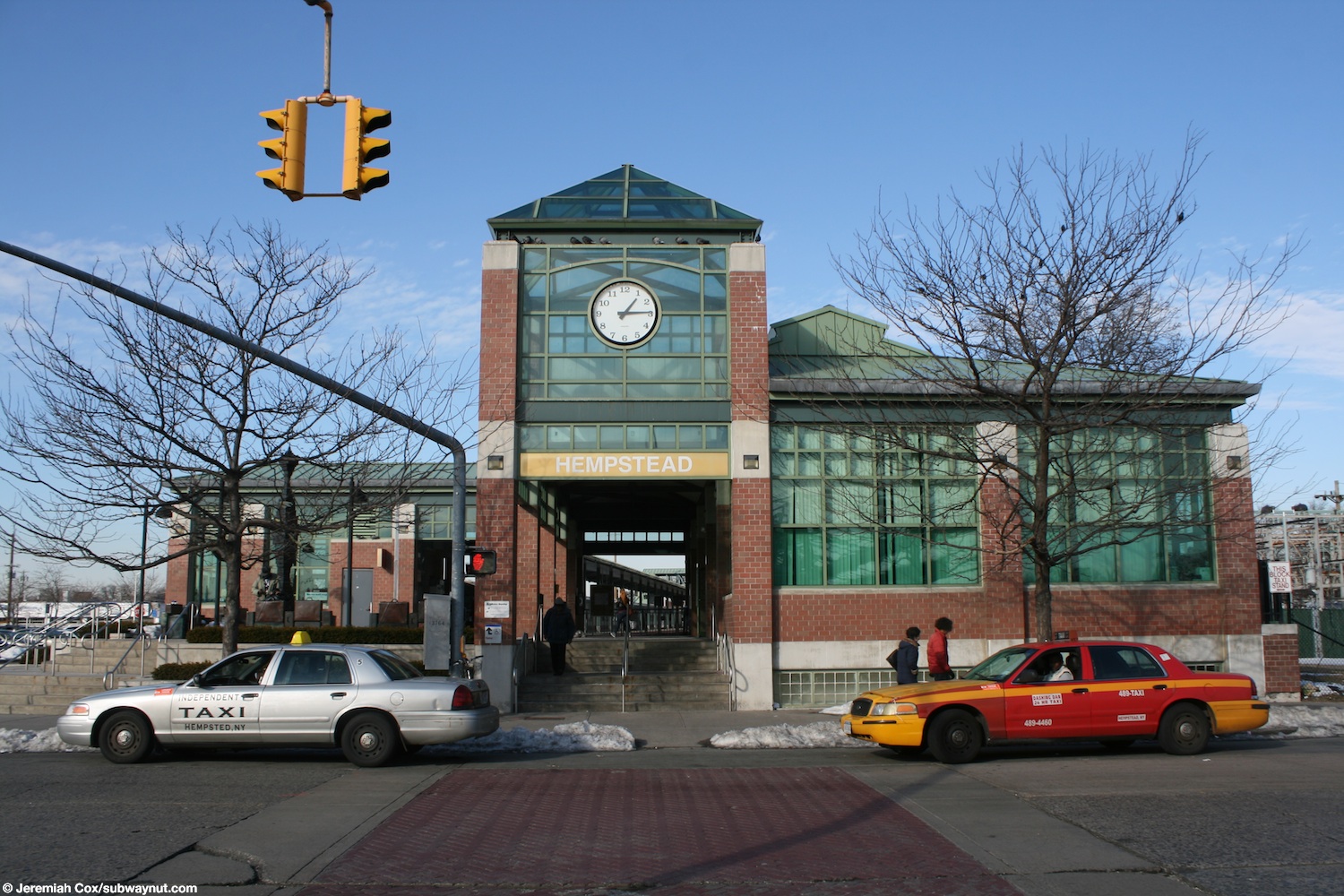

/cdn.vox-cdn.com/uploads/chorus_image/image/47553995/usa-today-8548176.0.jpg)



























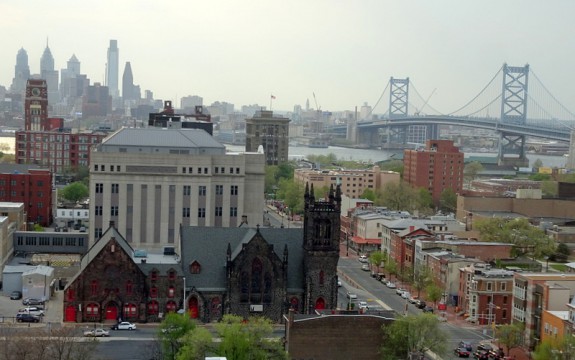





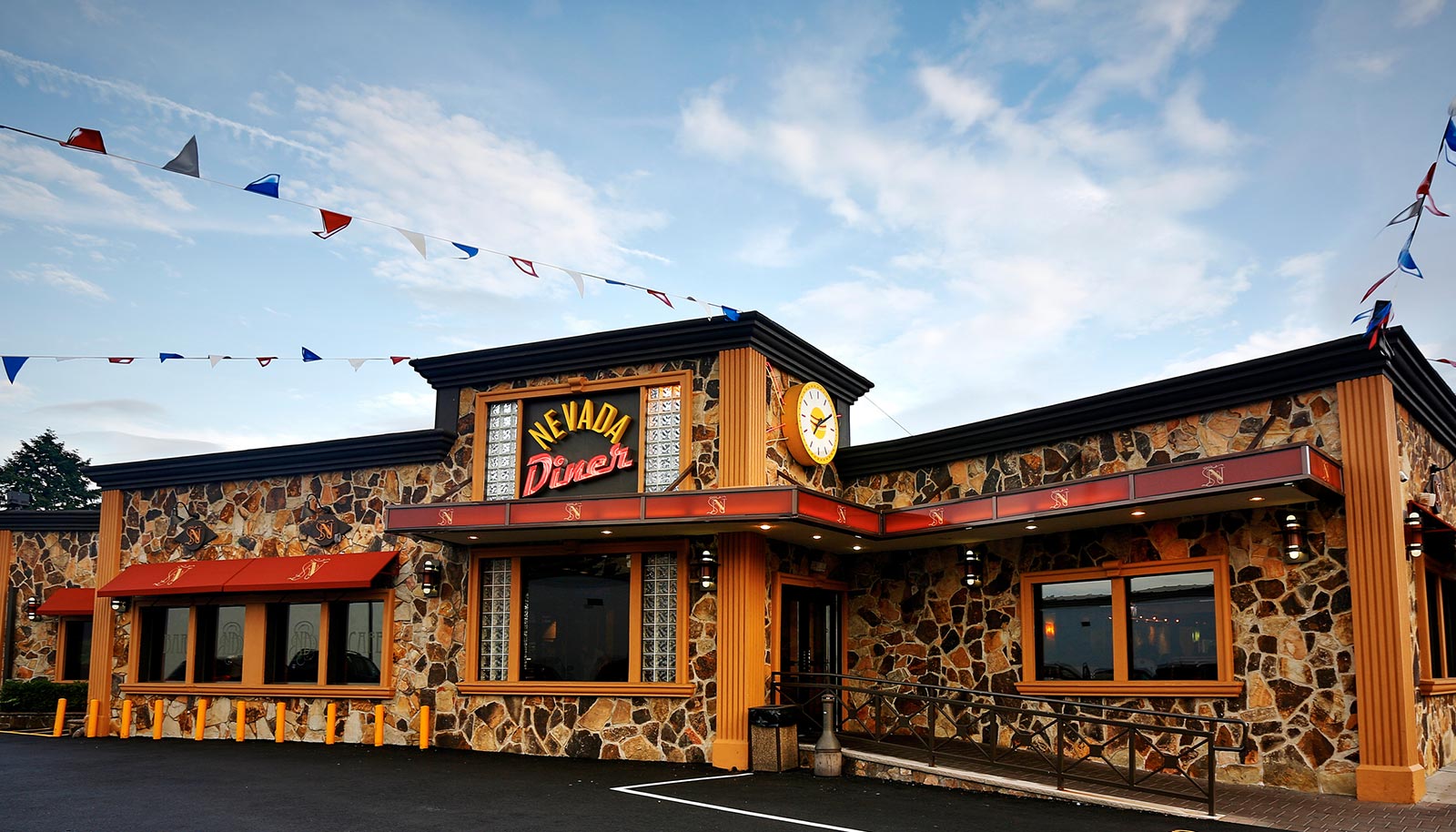

/disco-fries-tops-56d287db5f9b5879cc87ef13.jpg)









































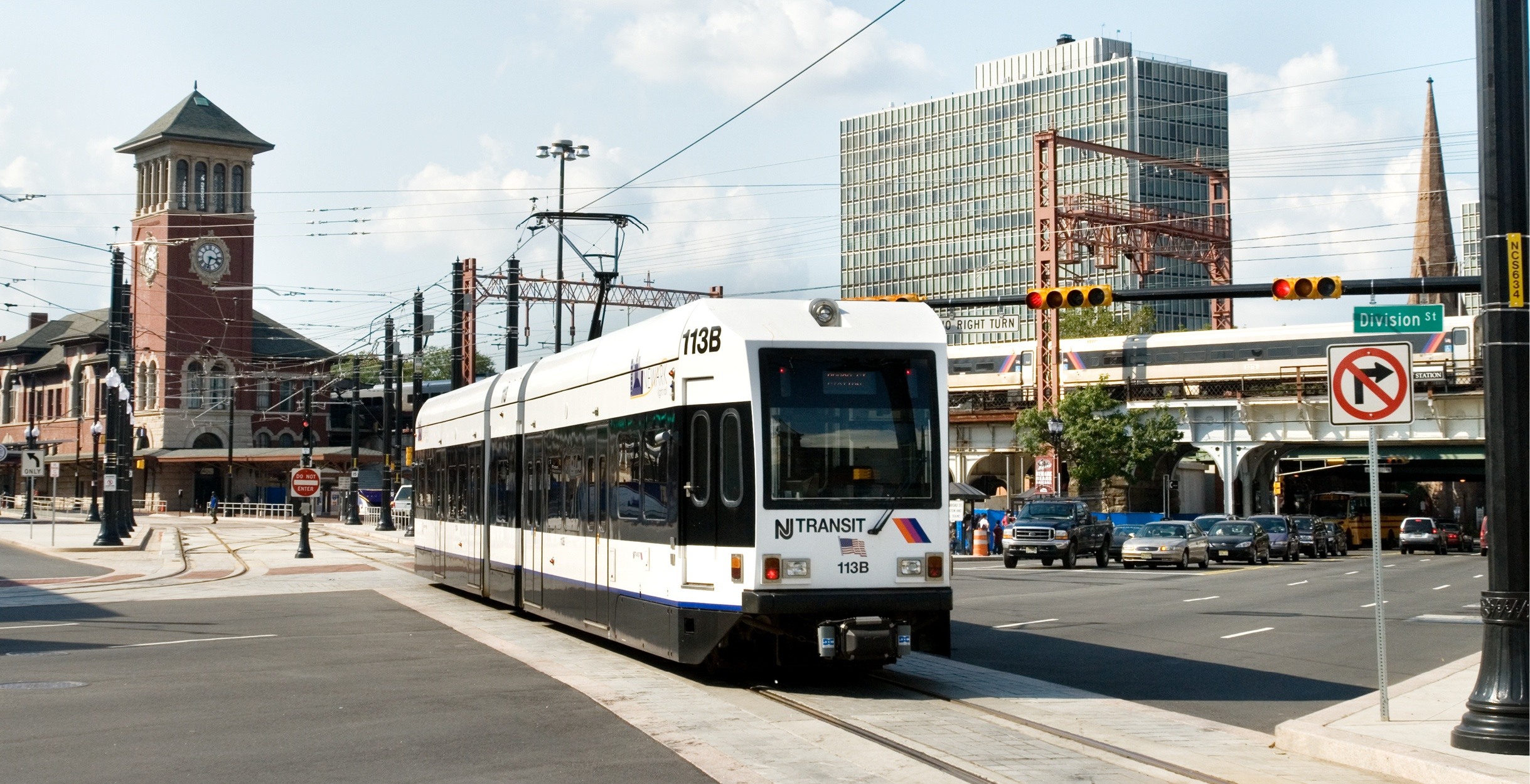





























































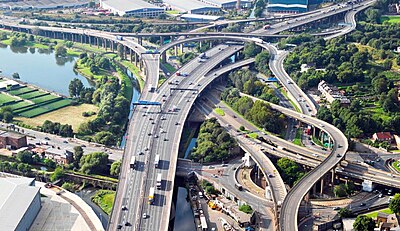




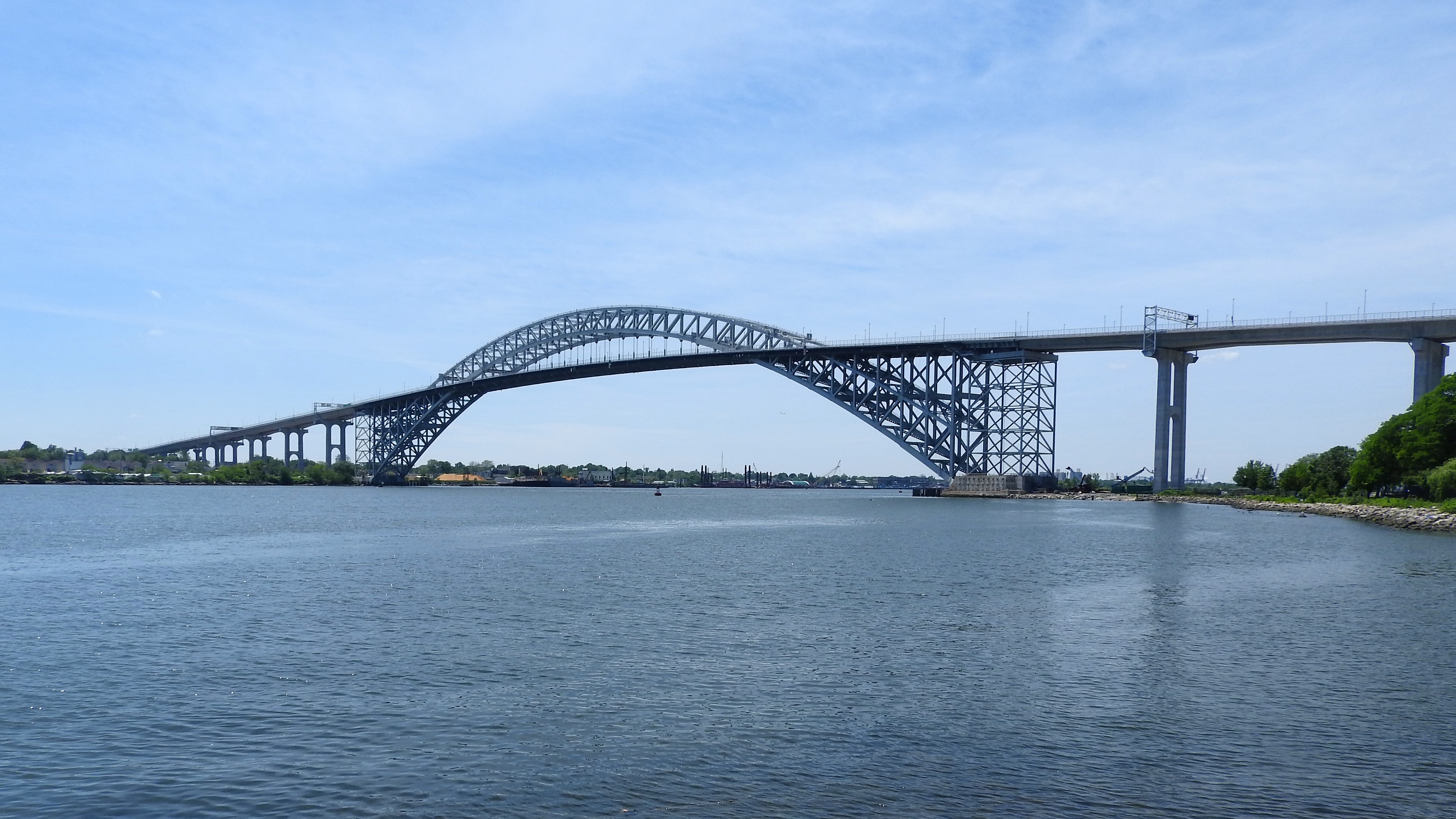










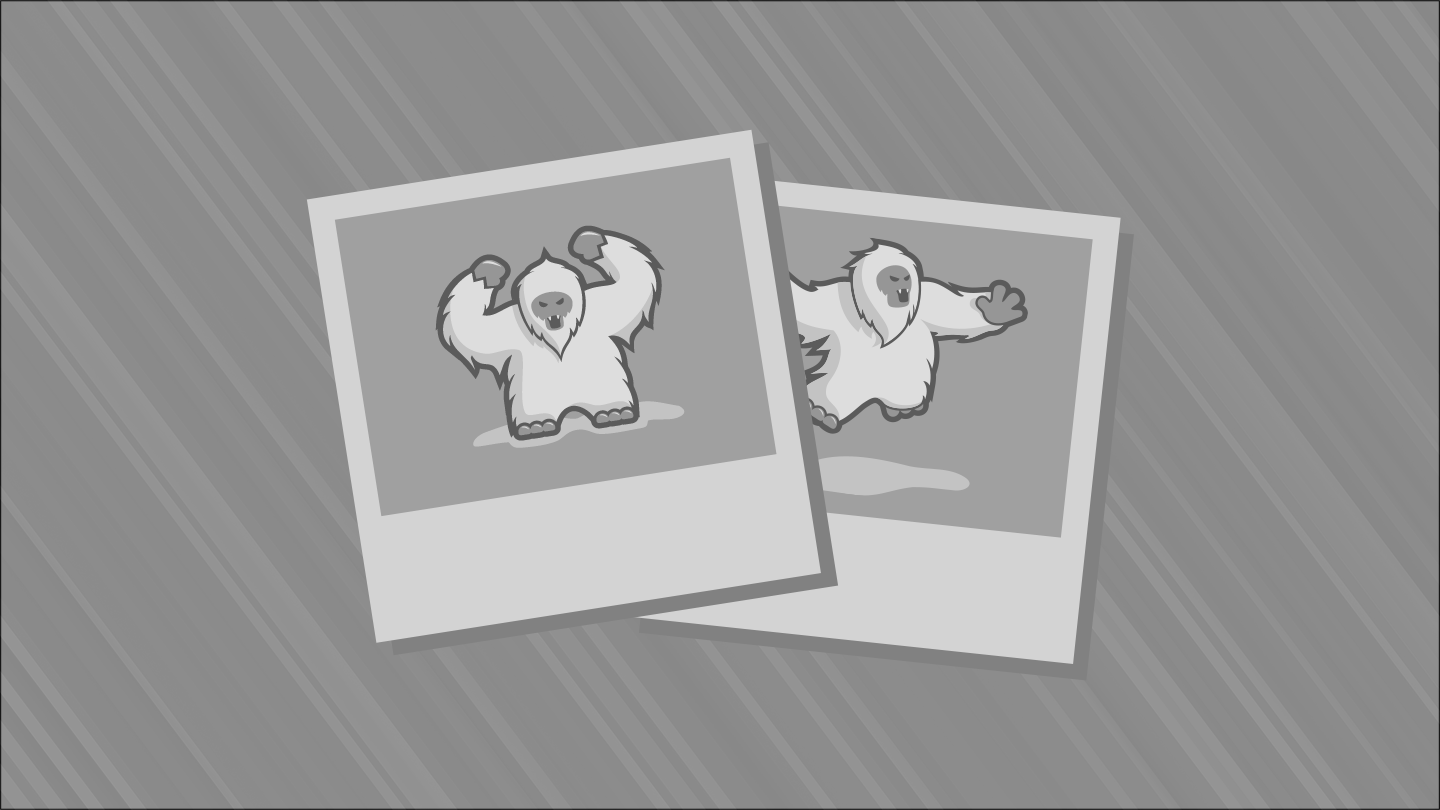
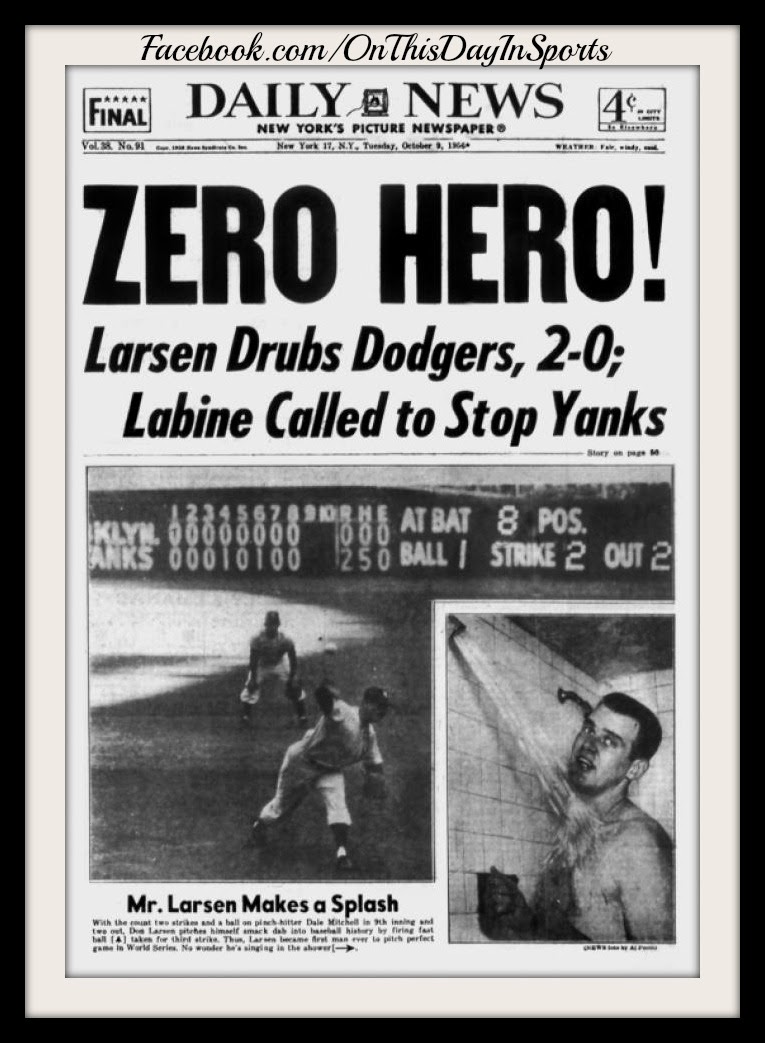








/cdn.vox-cdn.com/uploads/chorus_asset/file/19567520/PI_NBA_DavidStern_Legacy_020114.vre_8a3130615a94f410VgnVCM100000d7c1a8c0____.jpg)





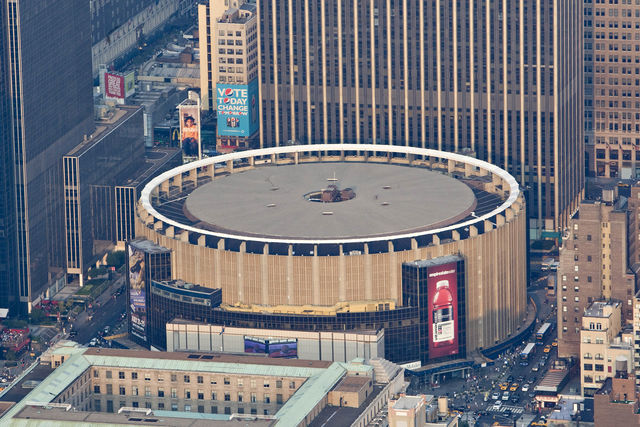

.jpg)


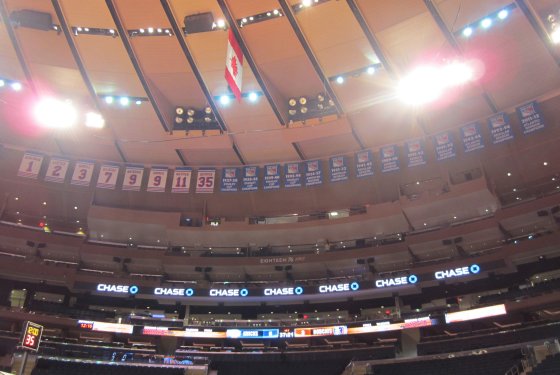






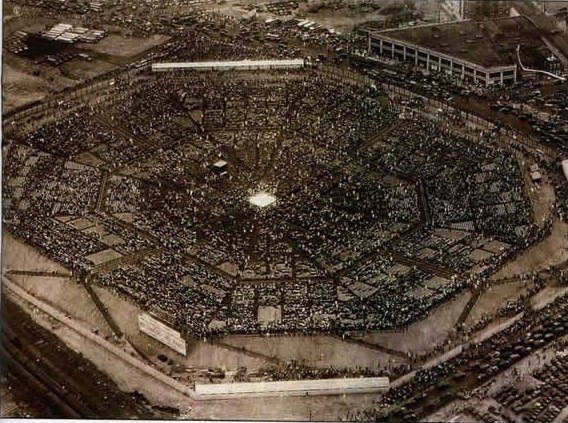


/cdn.vox-cdn.com/uploads/chorus_image/image/44250378/bill-parcells-leon-hess.0.0.jpg)

















